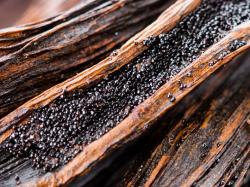The Problem With Vanilla
September 14, 2016 | 1 min to read

Today, vanilla is so well-known that its very name means “common.” But for centuries, vanilla was a rare, New World flavor enjoyed mainly by European elites. That changed in 1841 thanks to a 12-year-old boy wielding a tiny stick.
Edmond Albius was an enslaved worker in the French colony of Réunion who, after close inspection of the vanilla orchid Vanilla planifolia, figured out how to hand-pollinate its flower to produce vanilla beans.
Albius used the stick to push up a flap in the orchid flower called the rostellum and press the pollen-coated anther against the female part, or stigma. Until Albius’s discovery, vanilla had been successfully cultivated only in its native southeastern Mexico, home of its pollinator, the Melipona bee. It was there that the Spanish explorer Hernán Cortés famously witnessed the Aztec Emperor Montezuma drinking a chocolate beverage flavored with vanilla.
To read the rest of the story, please go to: C&EN
